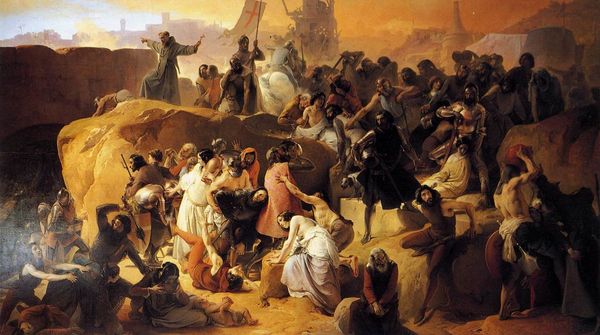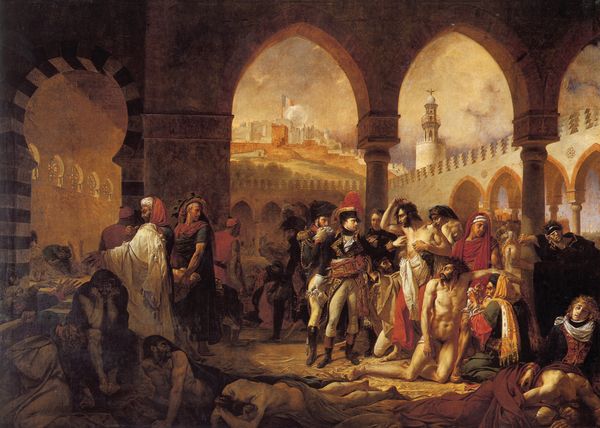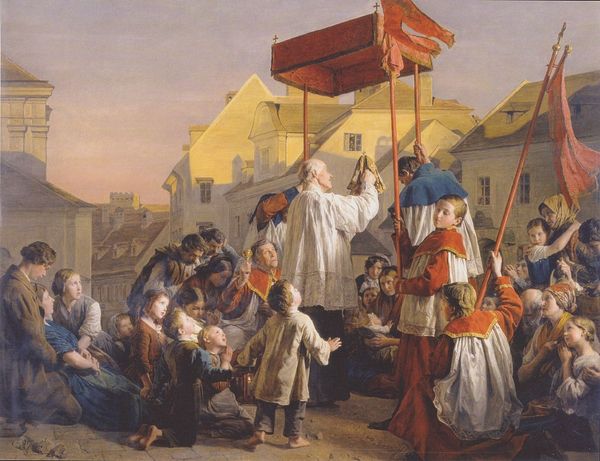
painting, oil-paint
#
narrative-art
#
painting
#
oil-paint
#
landscape
#
figuration
#
oil painting
#
romanticism
#
mythology
#
history-painting
#
italian-renaissance
Dimensions: 225 x 300 cm
Copyright: Public domain
Curator: This compelling oil on canvas is Francesco Hayez’s *The Sicilian Vespers (Version III)*, painted in 1846 and now held at the Galleria Nazionale d'Arte Moderna e Contemporanea in Rome. The artist uses precise brushwork to evoke both drama and emotional tension within the scene. Editor: My first impression is that the scene seems paused, suspended between action and consequence. The somber color palette—greys, reds, muted earth tones—adds to a sense of foreboding, as if something terrible has either just happened or is about to. It’s almost theatrical, really. Curator: Hayez masterfully stages the composition by emphasizing line and form. Notice how the central figure—poised with the sword—forms a clear diagonal, slicing through the crowd, dividing it almost geometrically. And consider how his color choice creates focal points across the plane. Editor: I see it also as a reflection on collective anger, sparked by centuries of foreign domination. *The Sicilian Vespers* were, of course, the uprising in 1282 against Charles I of Anjou’s rule. What this work does effectively, though, is channel that political unrest through individuals—look at the gestures and expressions. There’s a range from grief to fury in that gathering of people. Curator: Agreed. The emotive range presented does provide an important aesthetic and organizational structure in the frame. If we look closely, the artist uses color, texture, and especially light to suggest ways of creating a complex sense of perspective within the setting and staging. Editor: And perhaps this particular framing says much about Hayez’s own moment. Risorgimento Italy looked to history as a way to inspire its future. In a way, then, it's less about medieval Sicily than it is about mid-19th century national awakening. It asks us to see the contemporary resonances. Curator: I’m drawn to the artist’s delicate modulation in shading, but for all our political context and aesthetic analysis, I appreciate most that the power of Hayez's image lies in the strength of its rendering. Editor: Yes, regardless of its historical anchoring, its emotional core keeps resonating powerfully even now.
Comments
No comments
Be the first to comment and join the conversation on the ultimate creative platform.













